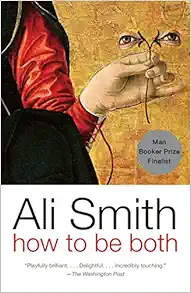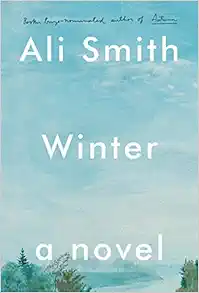
Description
WINNER OF THE BAILEYS WOMEN'S PRIZE FOR FICTION •xa0WINNER OF THE 2014 GOLDSMITHS PRIZE •xa0WINNER OF THE 2014 COSTA NOVEL AWARDxa0•xa0WINNER OF THE SALTIRE LITERARY BOOK OF THE YEAR AWARDA Best Book of the Year: NPR, Financial Times “Playfully brilliant. . . . Delightful. . . . Incredibly touching.” — The Washington Post “Magnificent. . . . Brilliant and cheeky.” —The Boston Globe “[A] sly and shimmering double helix of a novel.” —The New York Times Book Review “Joyful. . . . Moving. . . .xa0 Encompasses wonderful mothers, unconventional love and friendship, time, mortality, gender, the consolations of art and so much else.” —NPR “A mystery to be marveled at. . . . Smith is endlessly artful, creating a work that feels infinite in its scope and intimate at the same time.” — The Atlantic “Ali Smith is a genius. . . . [ How to be both ] cements Smith’s reputation as one of the finest and most innovative of our contemporary writers. By some divine alchemy, she is both funny and moving; she combines intellectual rigor with whimsy.” — The Los Angeles Review of Books “Captivating. . . . How to be bothxa0indeed works both ways, demonstrating not only the power of art itself but also the mastery of Smith’s prose.” — San Francisco Chronicle “A synthesis of questions long contemplated by an extraordinarily thoughtful author, who succeeds quite well in implanting those questions into well-drawn, memorable people.” — The New York Times “Innovative. . . . The book’s high-concept design is offset by the beauty, prowess, and range of Smith’s playfully confident, proudly unconventional prose.” — Elle “Deft and mischievous, a novel of ideas that folds back on itself like the most playful sort of arabesque.” — Los Angeles Times “Ali Smith’s signature themes—of the fluidity of identity and gender, appearance and perception—are here in profusion, as is her joyful command of language, from lofty rhetoric to earthy pun.” — Minneapolis Star Tribune “Ali Smith is a master storyteller, andxa0How to be bothxa0is a charming and erudite novel that can quite literally make us rethink the way we read.” — The Philadelphia Inquirer “An entirely delightful and moving story. . . . When you reach the end of this playful and wise novel, you want to turn to the beginning and read it again to piece together its mysteries and keep both halves simultaneously in mind.” — The Dallas Morning News “A wonderfully slippery, postmodern examination of the perception, gender, loss and the lasting power of art. . . . The sort of book you could happily read a second time and uncover overlooked truths. In art as finely crafted as this, there’s always more to see, if you look.” — The Miami Herald “Boundless. . . . Exhilarating. . . . Smith’s concerns—in subject matter and form—are profound and encompassing, and it is beautiful to watch her books defy pinning down.” — Portland Oregonian “An inventive and intriguing look into the world of art, love, choices, and the duality of the human existence. . . . Even though Smith is writing two very different stories from two different eras, she does a masterful job of weaving connecting threads between the two.” — Milwaukee Journal Sentinel “Wildly inventive. . . . The narrative voice makes the double-take cohesive, as both are lyrical and fresh. . . . I absolutely adored this book.” —Laura Creste, Bustle “Smith’s talent shines brightest in her tender depiction of the emotions that, like the underpaintings in a fresco, remain hidden but have a powerful impact.” — BookPage ALI SMITH is the author of many works of fiction, including, most recently, Summer , Spring , Winter , Autumn , Public Library and Other Stories , and How to Be Both , which won the Baileys Women's Prize for Fiction, the Goldsmiths Prize, and the Costa Novel of the Year Award. Her work has been shortlisted four times for the Booker Prize. Most recently, she won the George Orwell Prize for Fiction for Summer . Born in Inverness, Scotland, she lives in Cambridge, England. Excerpt. © Reprinted by permission. All rights reserved. Consider this moral conundrum for a moment, George’s mother says to George who’s sitting in the front passenger seat. xa0 Not says. Said.xa0 xa0 George’s mother is dead. xa0 What moral conundrum? George says. xa0 The passenger seat in the hire car is strange, being on the side the driver’s seat is on at home. This must be a bit like driving is, except without the actual, you know, driving. xa0 Okay. You’re an artist, her mother says. xa0 Am I? George says. Since when? And is that a moral conundrum?xa0 xa0 Ha ha, her mother says. Humour me. Imagine it. You’re an artist. xa0 This conversation is happening last May, when George’s mother is still alive, obviously. She’s been dead since September. Now it’s January, to be more precise it’s just past midnight on New Year’s Eve, which means it has just become the year after the year in which George’s mother died. xa0 George’s father is out. It is better than him being at home, standing maudlin in the kitchen or going round the house switching things off and on. Henry is asleep. She just went in and checked on him; he was dead to the world, though not as dead as the word dead literally means when it means, you know, dead. xa0 This will be the first year her mother hasn’t been alive since the year her mother was born. That is so obvious that it is stupid even to think it and yet so terrible that you can’t not think it. Both at once. xa0 Anyway George is spending the first minutes of the new year looking up the lyrics of an old song. Let’s Twist Again. Lyrics by Kal Mann. The words are pretty bad. Let’s twist again like we did last summer. Let’s twist again like we did last year. Then there’s a really bad rhyme, a rhyme that isn’t, properly speaking, even a rhyme. xa0 Do you remember when Things were really hummin’.xa0 xa0 Hummin’ doesn’t rhyme with summer, the line doesn’t end in a question mark, and is it meant to mean, literally, do you remember that time when things smelt really bad?xa0 xa0 Then Let’s twist again, twisting time is here. Or, as all the sites say, twistin’ time.xa0 xa0 At least they’ve used an apostrophe, the George from before her mother died says.xa0 xa0 I do not give a fuck about whether some site on the internet attends to grammatical correctness, the George from after says. xa0 That before and after thing is about mourning, is what people keep saying. They keep talking about how grief has stages. There’s some dispute about how many stages of grief there are. There are three, or five, or some people say seven.xa0 xa0 It’s quite like the songwriter actually couldn’t be bothered to think of words. Maybe he was in one of the three, five or seven stages of mourning too. Stage nine (or twenty three or a hundred and twenty three or ad infinitum, because nothing will ever not be like this again): in this stage you will no longer be bothered with whether songwords mean anything. In fact you will hate almost all songs. xa0 But George has to find a song to which you can do this specific dance. xa0 It being so apparently contradictory and meaningless is no doubt a bonus. It will be precisely why the song sold so many copies and was such a big deal at the time. People like things not to be too meaningful. xa0 Okay, I’m imagining, George in the passenger seat last May in Italy says at exactly the same time as George at home in England the following January stares at the meaninglessness of the words of an old song. Outside the car window Italy unfurls round and over them so hot and yellow it looks like it’s been sandblasted. In the back Henry snuffles lightly, his eyes closed, his mouth open. The band of the seatbelt is over his forehead because he is so small. xa0 You’re an artist, her mother says, and you’re working on a project with a lot of other artists. And everybody on the project is getting the same amount, salary-wise. But you believe that what you’re doing is worth more than everyone on the project, including you, is getting paid. So you write a letter to the man who’s commissioned the work and you ask him to give you more money than everyone else is getting. xa0 Am I worth more? George says. Am I better than the other artists? xa0 Does that matter? her mother says. Is that what matters? xa0 Is it me or is it the work that’s worth more? George says. xa0 Good. Keep going, her mother says. xa0 Is this real? George says. Is it hypothetical? xa0 Does that matter? her mother says. Read more
Features & Highlights
- MAN BOOKER PRIZE FINALIST • A novel all about art's versatility, borrowing from painting’s fresco technique to make an original literary double-take."Cements Smith’s reputation as one of the finest and most innovative of our contemporary writers. By some divine alchemy, she is both funny and moving; she combines intellectual rigor with whimsy" —
- The Los Angeles Review of Books
- How to be both
- is a fast-moving genre-bending conversation between forms, times, truths and fictions. There’s a Renaissance artist of the 1460s. There’s the child of a child of the 1960s. Two tales of love and injustice twist into a singular yarn where time gets timeless, structural gets playful, knowing gets mysterious, fictional gets real—and all life’s givens get given a second chance. Passionate, compassionate, vitally inventive and scrupulously playful, Ali Smith’s novels are like nothing else.





